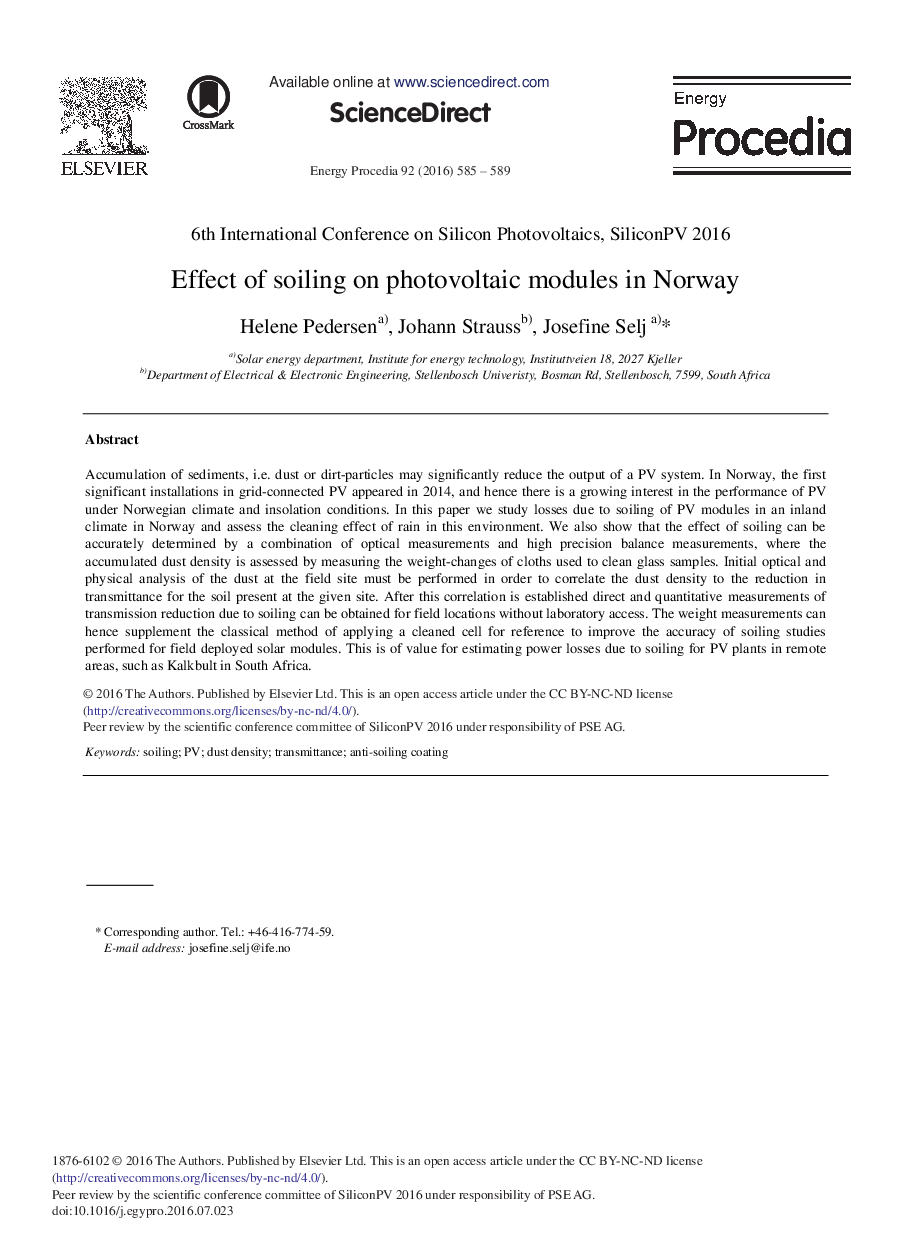| Article ID | Journal | Published Year | Pages | File Type |
|---|---|---|---|---|
| 5446632 | Energy Procedia | 2016 | 5 Pages |
Abstract
Accumulation of sediments, i.e. dust or dirt-particles may significantly reduce the output of a PV system. In Norway, the first significant installations in grid-connected PV appeared in 2014, and hence there is a growing interest in the performance of PV under Norwegian climate and insolation conditions. In this paper we study losses due to soiling of PV modules in an inland climate in Norway and assess the cleaning effect of rain in this environment. We also show that the effect of soiling can be accurately determined by a combination of optical measurements and high precision balance measurements, where the accumulated dust density is assessed by measuring the weight-changes of cloths used to clean glass samples. Initial optical and physical analysis of the dust at the field site must be performed in order to correlate the dust density to the reduction in transmittance for the soil present at the given site. After this correlation is established direct and quantitative measurements of transmission reduction due to soiling can be obtained for field locations without laboratory access. The weight measurements can hence supplement the classical method of applying a cleaned cell for reference to improve the accuracy of soiling studies performed for field deployed solar modules. This is of value for estimating power losses due to soiling for PV plants in remote areas, such as Kalkbult in South Africa.
Keywords
Related Topics
Physical Sciences and Engineering
Energy
Energy (General)
Authors
Helene Pedersen, Johann Strauss, Josefine Selj,
